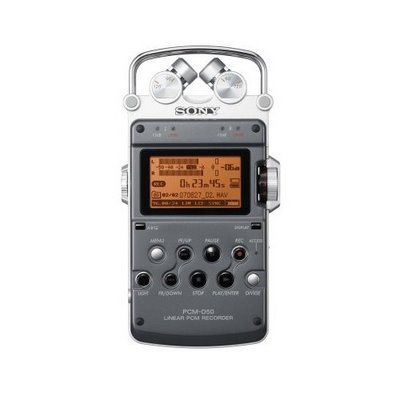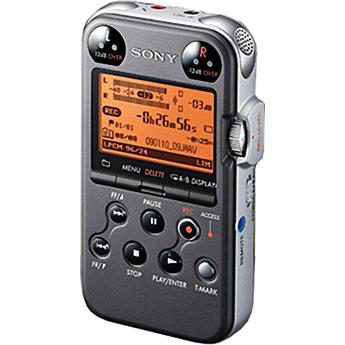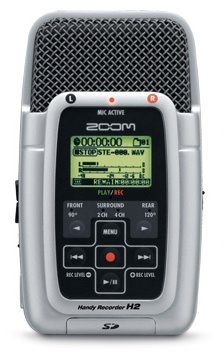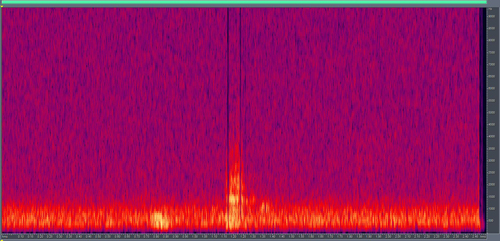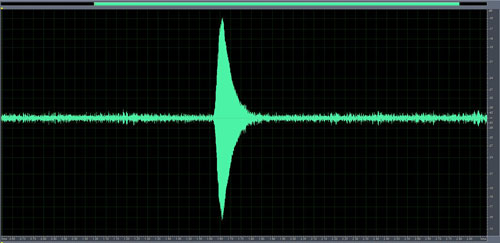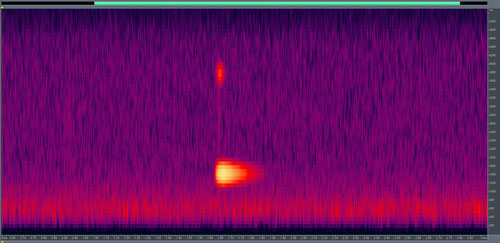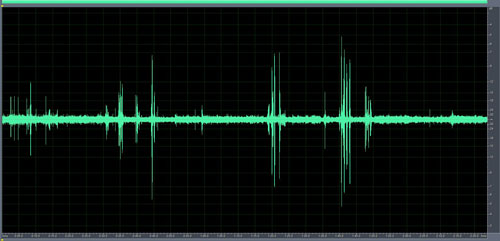Field Recorders – Pt 3
My main technique for recording is to leave the recording gear in the woods overnight. The amount of quality sounds I have been able to obtain with this method has far outdone what I could gather if I were only recording when I was hiking. Overnight recording does require more recording space and larger batteries.
Last time we looked at a recorder that was listed under $360. The next step up is:
Field Recorders under $450.
In the mid-priced range is the Sony PCM-D50.
The user’s manual can be found at:
Excellent reviews can be read at:
Forums discussing this recorder are:
There are several videos posted on YouTube.
Sony PCM-D50 Backs Up Heftier Price With Heftier Features
Recording media – 4Gb internal flash memory (accepts additional 4 GB Memory Stick)
Maximum recordable time – Using both the internal flash and external memory stick the record time in .wav at 44.1kHz 16bit CD quality mode is almost 13 hours.
Batteries – uses 4 AA batteries – Sony claims 14 hours record time
Recordings:
Sound file courtesy of f7 sound and vision
Conclusion – I have not used this particular unit but those who have appear to think it has many advantages over others in this price range.
Pros:
– great sound quality
– long battery life
– sturdy build quality
Cons:
– no xlr microphone ports unless you purchase an expensive adaptor box
– records only in .wav and compressed .wav
Field Recorders – Pt 2
New small digital recorders are coming onto the market all of the time. It is nearly impossible to keep up with all the new advances. Other than the quality of the sound, record time and battery life are of high importance in nature recording. This new recorder is very good on both of these aspects.
Field Recorders under $300.
A great new entry into the lower price range is the Sony PCM-M10â€.
The manufacturers websites:
The user’s manual can be found at:
Excellent reviews can be read at:
Brad Linder’s blog: Sony introduces PCM-M10 handheld pro audio recorder
Brad Linder’s blog: Sony PCM-M10 handheld audio recorder reviewed
Broadcast Engineering: In review: Sony’s PCM-M10 handheld digital recorder
Everything Audio Network: Home Recording Review! Sony PCM-M10
Sony PCM-M10:A palm-sized, professional recorder with full-sized performance.
Wingfield Audio: Sony PCM-M10 Review
Forums discussing this recorder are:
There are several videos posted on YouTube:
Sony PCM-M10 – Summer NAMM ‘09
NAMM ‘10 – Sony PCM-M10 Recorder & Digital Wireless Rackmount Systems
Recording media:
4GB of internal flash memory.
An additional 16GB of memory can be added with a Memory Stick Microâ„¢ (M2â„¢) or microSDHC (FAT32) card.
Maximum recordable time – In any card not all of the stated capacity is available for data. Using the 32 gb card the record time in .wav at 44.1kHz 16bit CD quality mode should be nearly 25 hr.
20 min.
Batteries
Using two Sony LR6 (SG) (size AA) alkaline batteries up to 46 hours.
Recordings:
I hope to add field recordings to this review.
Conclusion – I think this is a very good recorder and gets researchers into a nice, reasonably priced unit that has great battery life and recording times. Early reviews state that it’s sound quality is excellent and the unit retains the best features of its bigger siblings the Sony PCM-D1 and PCM-D50 while adding the versatility of mp3.
Pros:
– built-in microphones
– easy to use
– great sound
– great battery life
– great recording time
– reasonable price
Cons:
– no xlr ports
Field Recorders – Pt 1
Nature recording is a very difficult pursuit. Weather conditions are always a consideration. Then the ever present noise from trains-planes-automobiles always tends to happen just when something interesting is going on. And to that list add wind and water sounds. Our brains filter out those extra sounds when we are in the environment but on a recording they are very noticeable.
I am frequently asked what equipment I would recommend. I am certainly no expert but I have used a variety of recorders and can share my thoughts. So I will post a series of 4 articles, each dealing with a different priced recorder. I will not do much of a review, as that material has been thoroughly covered by others and you can follow the provided links.
Field Recorders under $160.
On the lower end of the price range is the Samson – H2 – Handy Recorder.
The manufacturers websites:
This website also has 3 videos describing its operation.
The user’s manual can be found at:
Excellent reviews can be read at:
Forums discussing this recorder are:
There are several videos posted on YouTube:
Quick guide to Zoom H2 MP3 recorder
Use Instructions for Zoom H2 Recorder
Recording media: SD card
I’ve been using a Transcend 16GB class 6 card (TS16GSDHC6) for some time now with my H2 and it works flawlessly.
Maximum recordable time – In any card not all of the stated capacity is available for data. Using this 16 gb card the record time in .wav at 44.1kHz 16bit CD quality mode is 23.5 hours.
Batteries
Using two Energizer L91BP-4 AA Lithium Batteries I was able to record for 14 hours 5 minutes.
Recordings:
I recorded this recently in the woods near my home in Central Illinois.
Conclusion – I think this is a very good recorder and gets researchers into a nice, reasonably priced unit and away from the voice-only models so many purchase when they are just starting out.
Pros:
– reasonable price
– great sound
– easy to use
– built-in microphones
Cons:
– light weight plastic
Old Hag vs Infrasound vs Unknown
The 21st of September 2008 I spent the night in a remote campground in the Lewis and Clark National Forest in Montana. This is one of my brother’s favorite campgrounds and I had camped here with him in 2005.
I arrived at the site about an hour after dark. There was one other camper, in a motor home on the other loop. Normally it would make me a little nervous pulling in and sleeping in a strange area but I had camped here before and I remembered the surroundings. The campground is along a creek nestled in the bottom of a little valley. Recording conditions were going to be perfect. I got out of my car and looked around. There was no wind and the creek was dried up, obviously only running during the winter and spring. The air was perfectly still.
I placed my microphone outside on my car’s driver side mirror and ran the cord through the window to the recorder which I placed on the dash.
I woke up four or five times during the night and looked around but seeing nothing quickly went back to sleep. At about 4 a.m. I woke up and just felt like something was very close to my car. I started to sit up and look around but couldn’t. Even though my mind said sit-up my body did not respond.
I quickly went back to sleep.
So what was this feeling I had? Was some animal close to my car? Was I paralyzed, why couldn’t I move? Was it just a bad dream or the old hag syndrome. Was it infrasound?
To read about the old hag syndrome see:
Starting at about 4 a.m. the recordings do show that something was close to my car. Now I can not say whether it was a deer, perhaps a black bear or some other unknown visitor.
Click here to listen to sound clip:Â Â Â Grunt 2
Waveform View
Spectral View
Click here to listen to sound clip: Â Â Rock Hitting Glass 1
Waveform View
Spectral View
The campground was very quiet and what was outside my car was very quiet also and although you can hear rustling the only sound of sufficient volume is this one sound clip. I do not know the maker of the sound. So did I record the Old Hag or something else?
Singing Coyote
At 2 a.m. on Sunday the 31st of August, 2008 I recorded several groups of coyotes. I had placed three different recorders at different locations within a half mile of each other. My best recording was of a single male coyote. It was so close to the microphone that it almost overpowered the unit. I won’t ever record a better single coyote than this one. The first clip is the original and in the second clip I filtered out the cicadas.
These sounds may not be my desired target species but they are still wonderful sounds to hear and record. Hopefully I am increasing my recording skills and learning techniques to record other animals as well.
The Weed Eater – Pt. 2
On the 12th of July 2008 I recorded a very unusual sound here in Southern Illinois. Since that time I have played this sound to hundreds of people, asking them what it sounds like. Eventually one person said it, “It sounds like someone trying to start a weed-eater”. Â That initial report can be found here “The Weed Eater”.
Later that summer I made several visits to the same general location, however not on the witnesses property. We did have to explain to the local authorities why we were sitting out in the woods in the dark at midnight.
The only unusual sound recorded was the following. You can listen to it both as original and how it sounds filtered to try and eliminate some of the katydids and crickets. This sound was coming from about 150 feet of us, deep in the woods, and not towards any highways. Once again I come up with the same conclusion, “It sounds like a weed-eater, only this time it is already started.” The following was recorded on the 25th of August 2008.
Click here to listen to sound clip:Â Weed Eater 2
Waveform View
Spectral View
